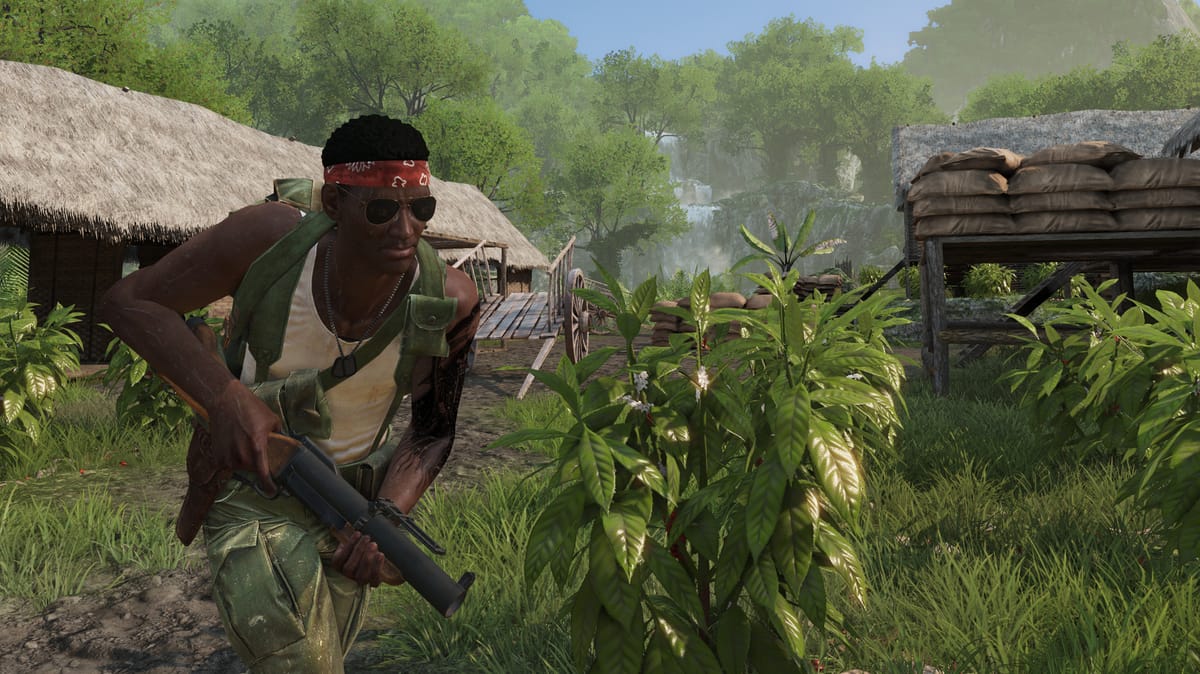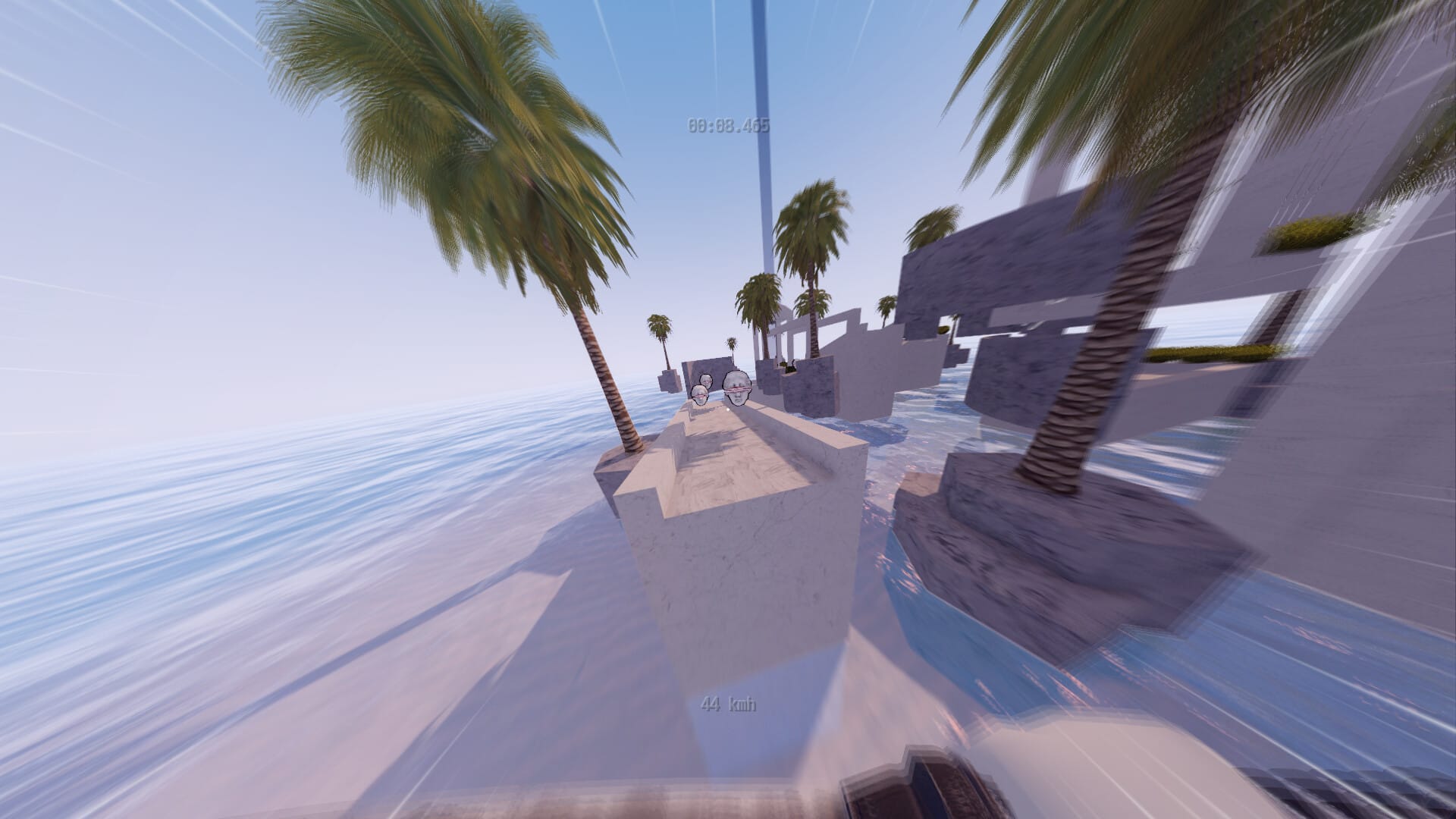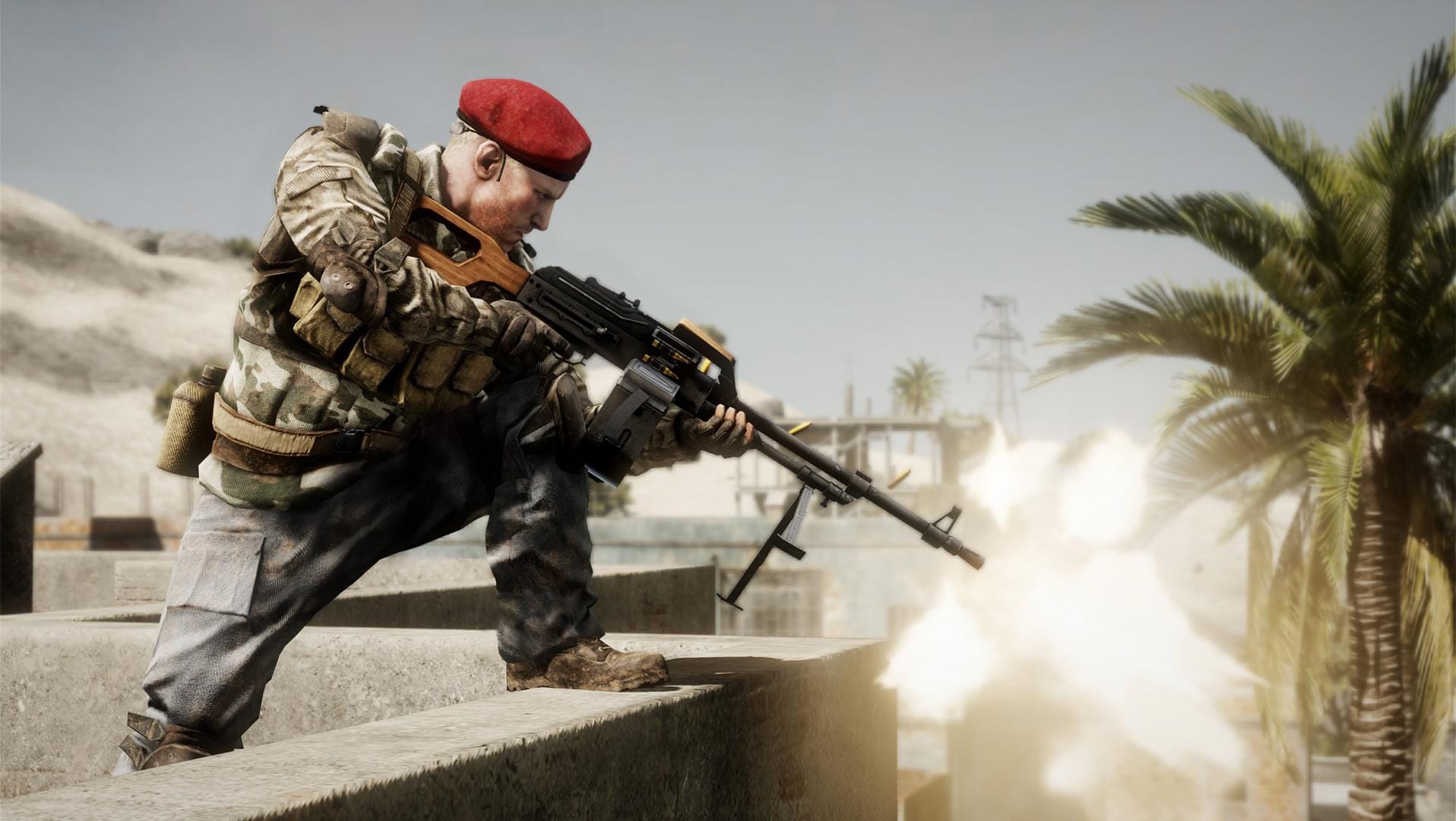Rising Storm 2: Vietnam proves that war is hell, but it makes me feel like a fortunate son
"War, what is it good for?" sang Edwin Starr. The answer is this game.

Honestly, I'm starting to think I have a Rocket League problem. I've been playing it most evenings, chopping and changing with Call of Duty: Black Ops 6. I was going to write about the campaign this week, but I realised I could sum it up in one sentence: the pacing doesn't work for me, and the story is incoherent. I'm enjoying the multiplayer, and the gun nerd in me enjoys the 1991-set armoury, but otherwise, it's left me cold.
I'd rather not yuck anyone's yum, though. Luckily, Tripwire has sprung a sale on its Red Orchestra franchise, meaning you can get the Red Orchestra and Rising Storm games cheap. I'd rather be positive than negative and suggest you buy Rising Storm 2: Vietnam, one of the best shooters I've played. You can get it now for 95 percent off, which means it's just £0.94 in the UK. They released a new update today too, even though it's mostly just fixing a few of the last outstanding bugs.
That's cheaper than a coffee. Hell, it's barely more expensive than a Mars bar. Maybe that's a bad comparison, but can a Mars bar throw you into some of the most intense combat in video games? I would like to see it try.
Combat is gnarly in Rising Storm 2: Vietnam. There are a lot of games that try to make you feel like you're in the thick of battle, but Rising Storm 2 pulls it off better than most, a magic trick it achieves not with graphical fidelity but by how helpless it makes players feel. A bullet to the head, heart or even your spine is an instant kill, which means even suppressive fire from a long way away can instantly send you back to a respawn point.
But you don't just have to worry about gunfire: there's artillery, napalm, attack helicopters… oh, and the most brutally efficient flamethrower in all of video games. You're going to have to work hard at any given moment to stay alive. Several times I've crawled through a hundred metres of overgrowth just to get accidentally fragged by my team, or caught out by an enemy looking completely the wrong way.
All along the watchtower
Rising Storm 2 is built on the bones of the World War II-set Red Orchestra 2 and offers up the same 64-player shootouts. Except instead of the bolt actions and bombed-out European battlegrounds of that game, you've got access to devastating 1960s hardware that's capable of accurate long-range fire and wide-open killing fields on most maps, meaning a single player can easily suppress an entire squad.
When you're the single player, this can feel elating. Crouched on a rooftop with a good field of view, it's satisfying to patiently pick your shots to keep your opponents in cover, there feels like a tradecraft and patience to it. Fighting against this is also enjoyable and rewarding. A squad will come together — and get in-game bonuses for sticking together in some coherent form — to try and smartly flank an opponent.
This is above ground. The hardened players, or the foolhardy, will descend into the tunnels that crisscross most of the maps. Here you get a glimpse of the differences between the squads: North Vietnamese forces can plough through tunnels fully armed, but American (or allied) forces are forced to stow their weapon and fight on with just a handgun. It's messy down there.
Asymmetry is a light touch generally. The "allied" forces, the US Army and then the Marine Corps, Australian forces and ARVN, have you spawning on a squad leader whereas the National Liberation Front and People's Army of Vietnam spawn out of "tunnel entrances" a squad leader can dig into the map. This reinforces the designed roles: Americans will move together, slowly and ponderously. North Vietnamese forces tumble out of tunnels and get straight to guerilla scuffles.
Often you'll be pixel hunting, a practice fairly beloved of those playing ‘00s shooters that sees you looking out at the scenery for the telltale glimpse of movement or a flash of slightly different colour: a helmet poking up over some cover, a tiny wrong patch of rock that means it's someone's arm, glimpsed through a bush. Because killing people is so easy in the game, you can easily pull off impossible feats of marksmanship. Sniping is easy when a shot to the centre of someone's torso will usually blow out their spine or hit the heart, while suppressing an area with a machine gun will annihilate anyone caught in the open.
This is made slightly more complicated by the fact that the weapons are all a pig to use. Iron sights are common here, and weapons will bounce around in automatic fire. It's smart to crouch and fire in bursts, but Rising Storm 2 imbues even the most casual skirmishes with terror so you'll often empty entire magazines into the trees in terror, which feels fitting.
Here's some gameplay, captured back in 2018 when I could still snipe an enemy out of a moving helicopter.
The maps feel less artificial than most of what you see in modern shooters now, too. Cover takes the form of half-destroyed concrete walls and junked tanks. Urban maps are full of windows, but you never quite get the angle you want. This means you'll regularly be repositioning and scuffling around and the game is better for it. Because each player has the potential to be hugely powerful, the maps tend to mitigate this. Power positions are rare and you'll often have to expose yourself to enemy fire to get a good angle yourself.
It's hard to take it too seriously either. Winning feels impossible for a single player, unless that player is a commander. Your impact can feel big, but in reality Rising Storm 2: Vietnam is carnage and you can't impact the win so much as you can try and suggest the idea of victory and hope the 32 people on your side are motivated enough to reach out and snatch a win from the chaos themselves.
Sadly, Rising Storm 2: Vietnam is no longer fully supported. The last update — before the one they dropped just after I wrote this — was a year ago and the head studio behind the game, Antimatter Games, closed last summer. Antimatter had already stopped working with Tripwire ahead of that point and the team were working on '83, a cold war gone hot game that has recently gone back into active development and something I'm quietly excited for. Still, for less than a quid you can play a game that feels fit to bursting with content.
This is a game I wish more designers would play. I love the idea of bullets to the heart and spine instantly killing people. The delayed kill feed means there are a few long seconds of tension after you shoot someone to see whether you put them down or they dived to the floor in time. I'm here extolling the virtues of military shooters week in and week out, but they each have different flavours. This one is "fragile fleeting sense of morality." Eat up.
Out This Week

A couple of interesting smaller games this week, while Lego Horizon launches for people who are into that sort of thing. Brutal Katana looks fast and fun and I know next to nothing about The Witch, but it looks the part. Also you are fighting what looks like a twisted version of Mickey Mouse in Infestation: Origins, which is a hell of a marketing beat. None of these are must-buys, but I'll be keeping an eye on reviews for the below.
- Brutal Katana 14 November
- The Witch 15 November
- Infestation: Origins 15 November
- Secret Bureau 18 November
- Frontline Inferno 18 November
Gibs

- Wesley Yin-Poole interviews a Call of Duty: Black Ops 6 player who managed to prestige in multiplayer — that's getting past level 55 and getting to start the whole Sisyphean ordeal of unlocks over again — without earning a single kill. I got around 2500 kills to prestige in Black Ops 6, so fair play to this guy who is almost definitely better than I am.
- David Goldfarb (Battlefield Bad Company, Payday 2, Metal Hellsinger) is keen to make Battlefield Bad Company 3, and says EA knows where to find him. This feels unlikely, considering EA's own struggles to make Battlefield work of late.
- I played Arc Raiders, Embark Studios next thing after The Finals (which I liked). I like the movement and robotic enemies, and I'm hoping it can do enough to move the needle on an extraction shooter genre that's feeling a bit stale.
- Talking of extraction shooters that feel a bit stale, I'm at 234 / 300 survives for the Tarkov PMC achievement, but hoping to make some real progress this weekend, providing I don't get mired in Rocket League again.
- Music! Bawo and Atrip's lo-fi rap track Talking Too Much has been on repeat here in the office, so now I offer it up to you.
